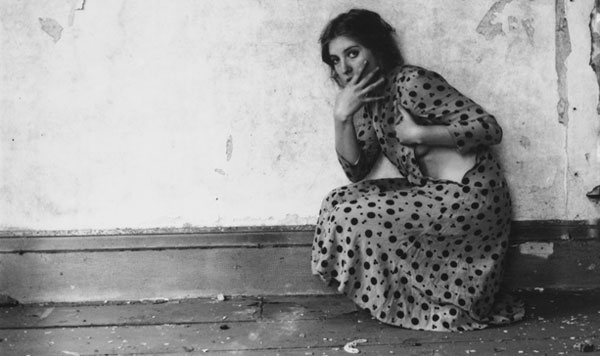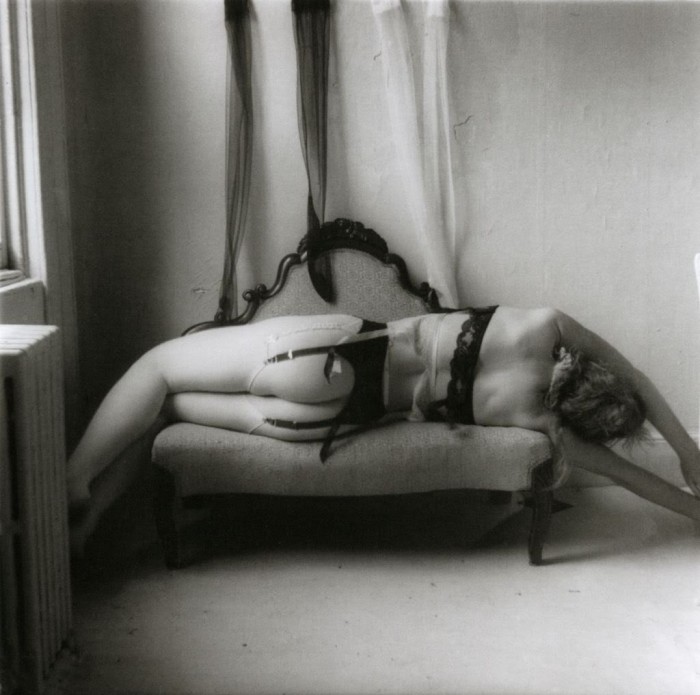|
January 14, 2014
Francesca Woodman was an America photographer who lived from 1958 until 1981. Her interest was in female subjectivity, seriality, Conceptualist practice, and photography’s relationship to both literature and performance. Though she experimented with various types of camera and formats of film while working, many of her pictures were made using a camera of medium format.
 Francesca Woodman, untitled, From Polka Dots series, Providence, Rhode Island, 1975—1978, Gelatin silver estate print.
Francesca Woodman, untitled, From Polka Dots series, Providence, Rhode Island, 1975—1978, Gelatin silver estate print.
While attending the Rhode Island School of Design, Woodman lived and worked in an old industrial space that served as a setting for both her photos and her performative personality. She traveled to Rome independently to study art for a year. Woodman was also deeply interested in the Surrealist movement and neo-Pictorialism—as seen in the work of fashion photographer Deborah Turbeville—and both movements are evident in the abstraction, motifs, and ghostly air of Woodman's work.
 Francesca Woodman, untitled, New York 1979.
Francesca Woodman, untitled, New York 1979.
Since her suicide in 1981, her work has been remarkably acknowledged by the contemporary art world especially, the late photographer’s black and white images of young women often expressing through nudity. Some of her photographs were shot with long exposure and slow shutter speed. Among the photos, are self portraits as well however her face is mostly obstructed often with sporadic presence of men.
Woodman’s photographs were often devoid of specificity of place or time. Woodman may be dressed in vintage clothing or not dressed at all and the spaces in the photographs are often bare, ruined or sparsely furnished. The images almost always include Woodman and her self-portraiture led to a body of work that was thematically linked by her struggle with her own identity.
Her images open up questions in regard to the gaze, the spectator/subject and discussions on fetishism and objectification of the body, particularly a woman’s body
|
